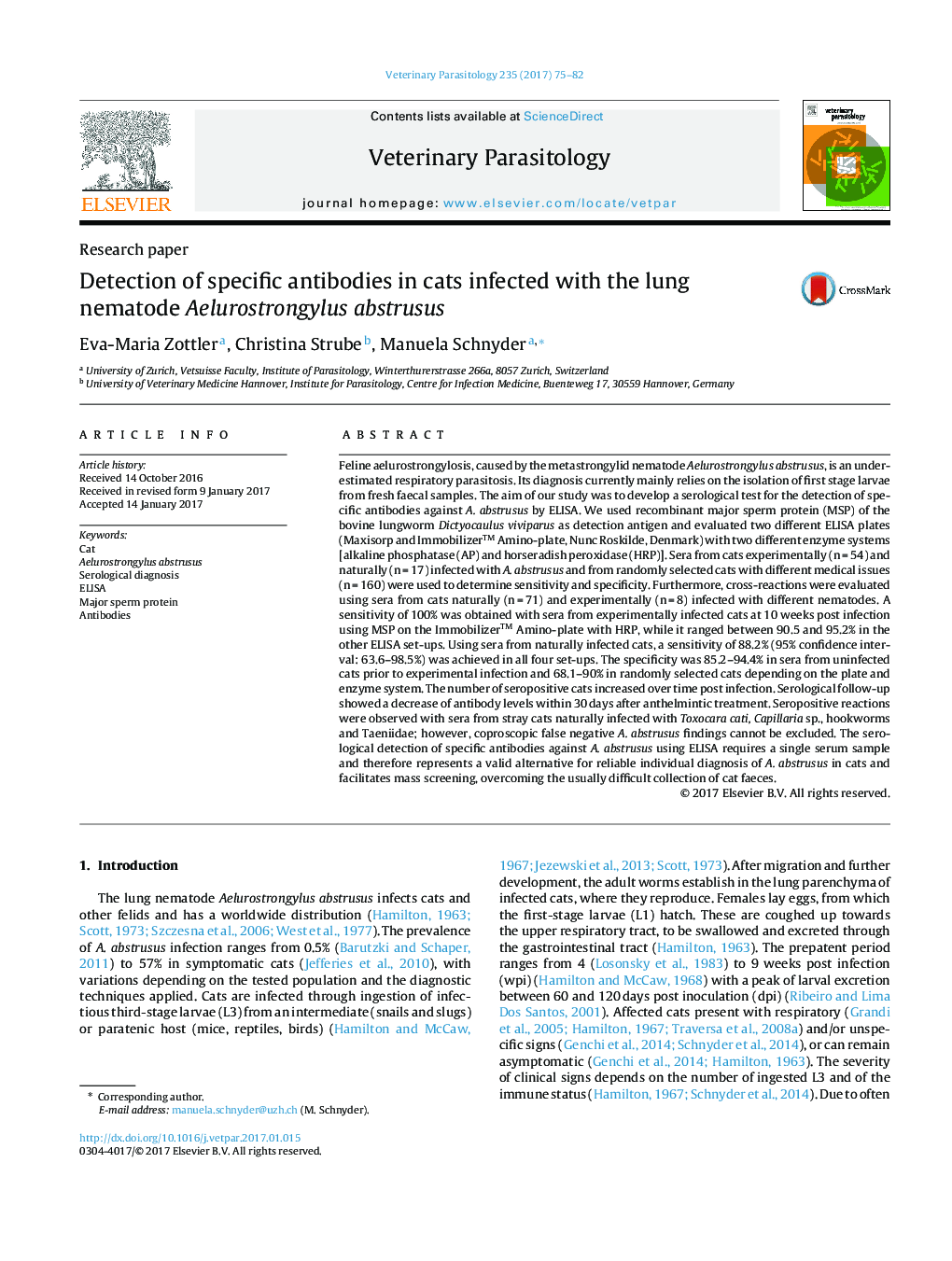| کد مقاله | کد نشریه | سال انتشار | مقاله انگلیسی | نسخه تمام متن |
|---|---|---|---|---|
| 5545855 | 1555641 | 2017 | 8 صفحه PDF | دانلود رایگان |

- We developed an ELISA for detection of antibodies against Aelurostrongylus abstrusus.
- Sensitivity was 100% and 88.2% with sera of experimentally resp. naturally infected cats.
- Specificity was 85.2-94.4% in negative cats prior to experimental infection.
- Specificity was 68.1-90% in randomly selected cats depending on the setting.
- The test is a valid alternative for individual diagnosis, overcoming faeces collection.
Feline aelurostrongylosis, caused by the metastrongylid nematode Aelurostrongylus abstrusus, is an underestimated respiratory parasitosis. Its diagnosis currently mainly relies on the isolation of first stage larvae from fresh faecal samples. The aim of our study was to develop a serological test for the detection of specific antibodies against A. abstrusus by ELISA. We used recombinant major sperm protein (MSP) of the bovine lungworm Dictyocaulus viviparus as detection antigen and evaluated two different ELISA plates (Maxisorp and Immobilizer⢠Amino-plate, Nunc Roskilde, Denmark) with two different enzyme systems [alkaline phosphatase (AP) and horseradish peroxidase (HRP)]. Sera from cats experimentally (n = 54) and naturally (n = 17) infected with A. abstrusus and from randomly selected cats with different medical issues (n = 160) were used to determine sensitivity and specificity. Furthermore, cross-reactions were evaluated using sera from cats naturally (n = 71) and experimentally (n = 8) infected with different nematodes. A sensitivity of 100% was obtained with sera from experimentally infected cats at 10 weeks post infection using MSP on the Immobilizer⢠Amino-plate with HRP, while it ranged between 90.5 and 95.2% in the other ELISA set-ups. Using sera from naturally infected cats, a sensitivity of 88.2% (95% confidence interval: 63.6-98.5%) was achieved in all four set-ups. The specificity was 85.2-94.4% in sera from uninfected cats prior to experimental infection and 68.1-90% in randomly selected cats depending on the plate and enzyme system. The number of seropositive cats increased over time post infection. Serological follow-up showed a decrease of antibody levels within 30 days after anthelmintic treatment. Seropositive reactions were observed with sera from stray cats naturally infected with Toxocara cati, Capillaria sp., hookworms and Taeniidae; however, coproscopic false negative A. abstrusus findings cannot be excluded. The serological detection of specific antibodies against A. abstrusus using ELISA requires a single serum sample and therefore represents a valid alternative for reliable individual diagnosis of A. abstrusus in cats and facilitates mass screening, overcoming the usually difficult collection of cat faeces.
Journal: Veterinary Parasitology - Volume 235, 15 February 2017, Pages 75-82